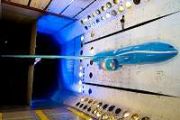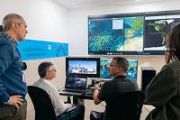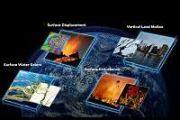
Copernical Team
NASA schedules heliophysics missions for September 2025 launch
 NASA and SpaceX have announced a revised target of September 2025 for the launch of the Interstellar Mapping and Acceleration Probe (IMAP) spacecraft. The updated schedule allows for additional time to complete final preparations for the IMAP flight systems ahead of its launch aboard a SpaceX Falcon 9 rocket.
IMAP's primary mission is to study the heliosphere, a protective magnetic bubble
NASA and SpaceX have announced a revised target of September 2025 for the launch of the Interstellar Mapping and Acceleration Probe (IMAP) spacecraft. The updated schedule allows for additional time to complete final preparations for the IMAP flight systems ahead of its launch aboard a SpaceX Falcon 9 rocket.
IMAP's primary mission is to study the heliosphere, a protective magnetic bubble Unveiling hidden stars in the Milky Way with stellar orbital mapping
 A research team led by the Leibniz Institute for Astrophysics Potsdam (AIP) has pioneered a method to reconstruct the Milky Way's structure by mapping the orbits of stars. This approach reveals a deeper understanding of the galaxy's evolution and the distribution of stellar populations.
Despite advances in observational astronomy, much of the Milky Way remains hidden due to the obscuring e
A research team led by the Leibniz Institute for Astrophysics Potsdam (AIP) has pioneered a method to reconstruct the Milky Way's structure by mapping the orbits of stars. This approach reveals a deeper understanding of the galaxy's evolution and the distribution of stellar populations.
Despite advances in observational astronomy, much of the Milky Way remains hidden due to the obscuring e SpaceX launches 21 Starlink satellites from Florida
 Shortly after midnight on Monday, SpaceX launched a new round of 21 Starlink satellites into lower Earth orbit, 13 of which can contact cell phones directly.
The Falcon 9 rocket blasted off from the Kennedy Space Center in Florida at 12:35 a.m., EDT. The first stage, making its 15th trip, landed safely on the drone ship "Just Read the Instructions" about eight minutes after the launch.
Shortly after midnight on Monday, SpaceX launched a new round of 21 Starlink satellites into lower Earth orbit, 13 of which can contact cell phones directly.
The Falcon 9 rocket blasted off from the Kennedy Space Center in Florida at 12:35 a.m., EDT. The first stage, making its 15th trip, landed safely on the drone ship "Just Read the Instructions" about eight minutes after the launch. Lab experiments explore origins of gullies on Asteroid Vesta
 The rugged surface of asteroid Vesta, studied extensively by NASA's Dawn mission, features craters and mysterious gullies whose formation has puzzled scientists. These deep channels, previously hypothesized to result from debris flows driven by meteoroid impacts and temperature changes, are now thought to involve a surprising factor: brief flows of water.
A recent NASA-funded study, publis
The rugged surface of asteroid Vesta, studied extensively by NASA's Dawn mission, features craters and mysterious gullies whose formation has puzzled scientists. These deep channels, previously hypothesized to result from debris flows driven by meteoroid impacts and temperature changes, are now thought to involve a surprising factor: brief flows of water.
A recent NASA-funded study, publis Webb Telescope detects new population of small Main Belt Asteroids
 The James Webb Space Telescope (JWST) has expanded its role in solar system research, revealing a previously undetectable population of small asteroids within the main asteroid belt between Mars and Jupiter.
A team from the Massachusetts Institute of Technology (MIT) used Webb's observations of the star TRAPPIST-1 to identify 138 new asteroids ranging in size from a bus to a stadium. These
The James Webb Space Telescope (JWST) has expanded its role in solar system research, revealing a previously undetectable population of small asteroids within the main asteroid belt between Mars and Jupiter.
A team from the Massachusetts Institute of Technology (MIT) used Webb's observations of the star TRAPPIST-1 to identify 138 new asteroids ranging in size from a bus to a stadium. These Dark energy theory challenged by evidence of a 'lumpy' Universe
 A groundbreaking study from researchers at the University of Canterbury in New Zealand proposes that dark energy, a long-debated concept in cosmology, may not exist. Using improved supernovae light curve analyses, the team argues the Universe's expansion is far more irregular than previously believed, rendering dark energy unnecessary to explain its accelerating rate.
For over a century, p
A groundbreaking study from researchers at the University of Canterbury in New Zealand proposes that dark energy, a long-debated concept in cosmology, may not exist. Using improved supernovae light curve analyses, the team argues the Universe's expansion is far more irregular than previously believed, rendering dark energy unnecessary to explain its accelerating rate.
For over a century, p NASA solar probe to make its closest ever pass of sun
This request seems a bit unusual, so we need to confirm that you're human. Please press and hold the button until it turns completely green. Thank you for your cooperation!
Press and hold the button
If you believe this is an error, please contact our support team.
185.132.36.159 : cc5e7b1f-5ee6-4e44-bac2-9df5fbab
New commercial Artemis moon rovers undergo testing at NASA
This request seems a bit unusual, so we need to confirm that you're human. Please press and hold the button until it turns completely green. Thank you for your cooperation!
Press and hold the button
If you believe this is an error, please contact our support team.
185.132.36.159 : 66f19af3-2fce-482e-80d6-b308840c
NASA's new Deep Space Network antenna has its crowning moment
This request seems a bit unusual, so we need to confirm that you're human. Please press and hold the button until it turns completely green. Thank you for your cooperation!
Press and hold the button
If you believe this is an error, please contact our support team.
185.132.36.159 : 6c3e42e7-de7f-4e5b-aea2-ddfd0cd3
NASA is developing solutions for lunar housekeeping's biggest problem: Dust
This request seems a bit unusual, so we need to confirm that you're human. Please press and hold the button until it turns completely green. Thank you for your cooperation!
Press and hold the button
If you believe this is an error, please contact our support team.
185.132.36.159 : 7c29e818-040f-48f8-9a1a-4e1a1c93




































